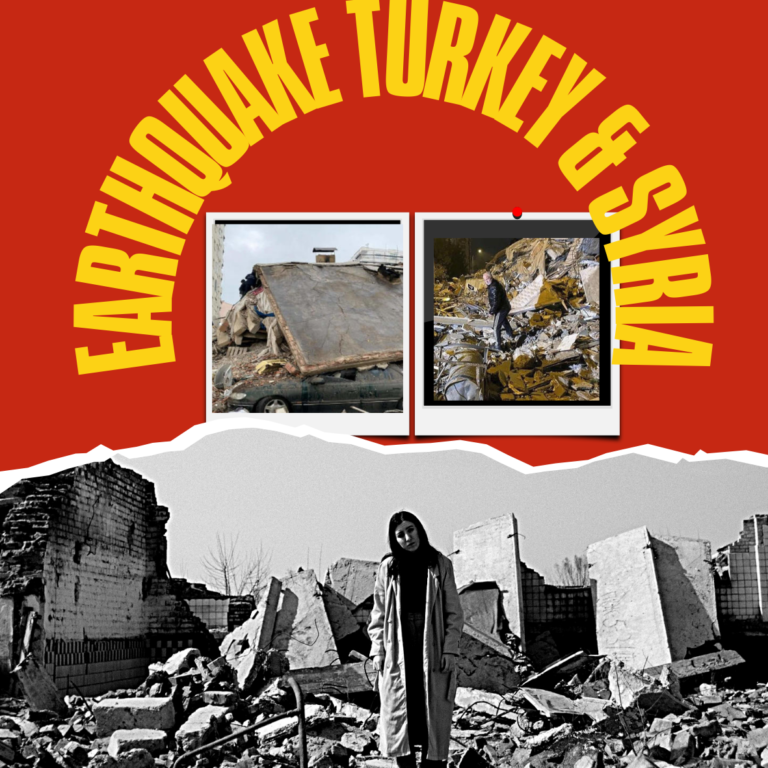
On Monday, three earthquakes struck Turkey and Syria, killing over 2300 people. Hundreds of buildings were damaged. Notably, tremors were felt all the way up to Greenland. During the night, a 7.8 magnitude earthquake struck southeastern Turkey and northern Syria.
https://wp.me/pesYdC-1bw: Multi-story Buildings Reduced to Rubble in Seconds as Earthquakes and Aftershocks Rattle Turkey & SyriaAftershocks have continued to cause damage and chaos hours after a massive earthquake struck south-central Turkey and northern Syria. According to USGS data, over 30 earthquakes of magnitude 4 or greater have been recorded in Turkey since the original quake, with the strongest measuring 7.5 Mv at 13:24 local time (GMT +3).
Two large earthquakes with magnitudes of 7.6 and 6 on the Richter scale struck Turkey hours later. The first earthquake struck Gaziantep, about 90 kilometres from the Syrian border. The region is home to millions of Syrian refugees fleeing the civil war. The earthquake was felt all the way in Cairo.
Meanwhile, the Elbistan district of Kahramanmaraş province in southern Turkey was struck by a second earthquake. It shook Damascus, Latakia, and other Syrian provinces. The third earthquake occurred in central Turkey.
According to experts, the massive 7.5 magnitude aftershock in Turkey could be even more devastating. This aftershock was extremely shallow, only 10 kilometres deep, which exacerbated the shaking. The main quake had a depth of 17.9 kilometres. Because of their proximity to the surface, shallower quakes are generally felt as more intense than deeper quakes. According to the ShakeMap, which calculates earthquake intensity, this earthquake has an intensity of VIII, indicating severe shaking and moderate to heavy damage. The initial quake had an intensity of IX.
Importantly, aftershocks disrupt ongoing relief and rescue operations, frequently injuring rescuers. Aftershocks will be a major challenge for authorities and international aid organisations as the death toll approaches in thousands.
According to reports, the total death toll in Turkey and Syria has risen to 2,300. Hundreds of people are still reported to be trapped under debris, prompting search and rescue efforts. The earthquake damaged a historic castle perched atop a hill in the heart of Gaziantep, the provincial capital. It is 33 kilometres from the epicentre.
According to Syria’s Directorate-General of Antiquities and Museums, the Crusader-built Marqab, or Watchtower Castle, was also damaged. Notably, on the Syrian side, the earthquake-affected area is divided between government-held territory and a rebel-held enclave.
Thousands of buildings were destroyed between Syria’s Aleppo and Hama and Turkey’s Diyarbakir, according to reports. Hundreds of aftershocks are expected as a result of the earthquakes. Several countries offered assistance to Turkey in its rescue efforts. Several countries also provided Turkey with medical supplies and money. The quakes reportedly injured nearly 9,000 people. As many people are in critical condition, the death toll is expected to rise.
Can Earthquake be predicted?
“Sooner or later there will be a ~M 7.5 #earthquake in this region (South-Central Turkey, Jordan, Syria, Lebanon),” he wrote on Twitter.
The Turkey quake ‘prediction’
Dutch researcher rank Frank Hoogerbeets, who works at Solar System Geometry Survey (SSGEOS), a Netherlands-based institute that monitors geometry between celestial bodies related to seismic activity, had “predicted” the quake on 3 February, three days ago.
What exactly are aftershocks, and why do they happen?
Aftershocks, according to the USGS, are a series of earthquakes that occur after a larger mainshock on a fault. Aftershocks occur near the fault zone where the mainshock rupture occurred and are part of the “readjustment process” following the fault’s main slip.
How powerful are the aftershocks likely to be?
Although aftershocks are usually less powerful than the main seismic event, they can still cause significant damage. According to reports in Turkey, aftershocks caused significant damage in the aftermath of the original quake. Aftershocks have sent many buildings tumbling, despite the fact that the main earthquake has already weakened structures.
Be Wary and SAFE!! Knowledge equals safety. @aditya Newz Quest
